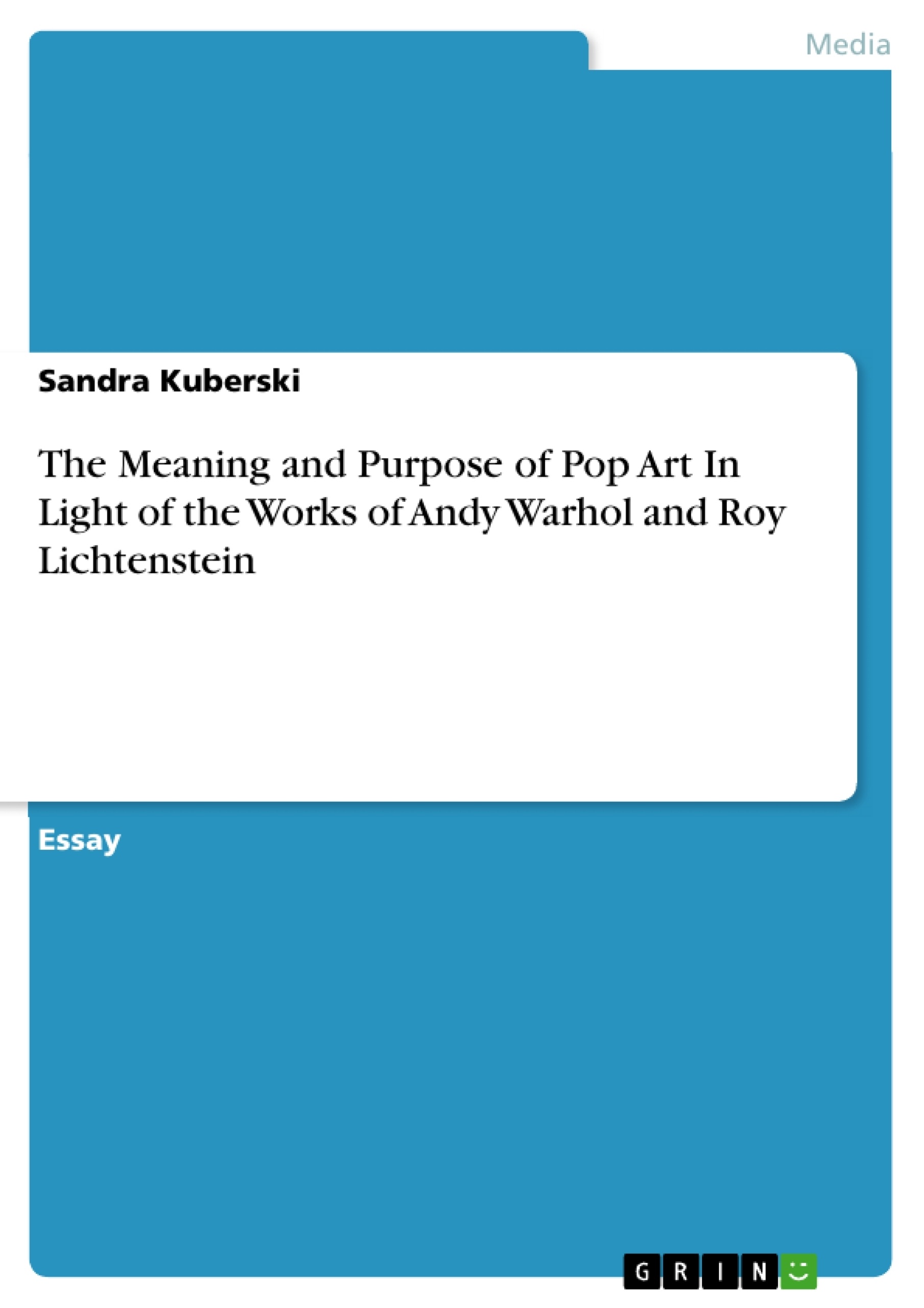The classic period of Pop art can be set from 1956 to 1968, although it was never an organized movement or a single group of artists. Pop art drew on imagery from popular culture, for example advertising or comics and emerged in the urban landscape of London and New York City. It never existed without harsh criticism; in fact it was always despised by the critics, but loved by the popular masses.
This essay is going to examine the meaning and purpose of Pop art in light of the critical quotation presented above. The observations made will be clarified on the basis of the works of Andy Warhol (1928-1987) and Roy Lichtenstein (1923-1997), two of the main representatives of American Pop art.
Table of Contents
- The Meaning and Purpose of Pop Art
- The Art Market and the Rise of Pop Art
- Pop Art as a Response to Consumerism
- The Pop Art Movement
- Andy Warhol: A Master of Pop Art
- Warhol's "Death and Disasters" Series
Objectives and Key Themes
This essay examines the meaning and purpose of Pop art, focusing on the works of Andy Warhol and Roy Lichtenstein. The main objective is to understand how Pop art reacted to the changing art market and its increased commercialization in the 20th century.- The emergence of a new art market and its impact on art
- The role of consumerism and popular culture in Pop art
- The relationship between Pop art and mass media
- The artistic techniques and themes of Andy Warhol
- The significance of Warhol's "Death and Disasters" series
Chapter Summaries
The first chapter explores the emergence of Pop art in the context of the changing art market of the 20th century. It examines the growing influence of collectors and the rise of a new art and entertainment industry. The second chapter discusses how Pop art embraced consumerism and popular culture, using imagery from advertising, comics, and mass media. It also explores the critical reception of Pop art and its rejection of traditional art values. The third chapter focuses on Andy Warhol, one of the most influential Pop artists. It analyzes his artistic techniques, his obsession with celebrity, and his exploration of death and disaster.
Keywords
Pop art, Andy Warhol, Roy Lichtenstein, art market, consumerism, popular culture, mass media, commercialization, Death and Disasters, celebrity, repetition, silkscreen.- Quote paper
- Sandra Kuberski (Author), 2012, The Meaning and Purpose of Pop Art In Light of the Works of Andy Warhol and Roy Lichtenstein, Munich, GRIN Verlag, https://www.grin.com/document/286013



